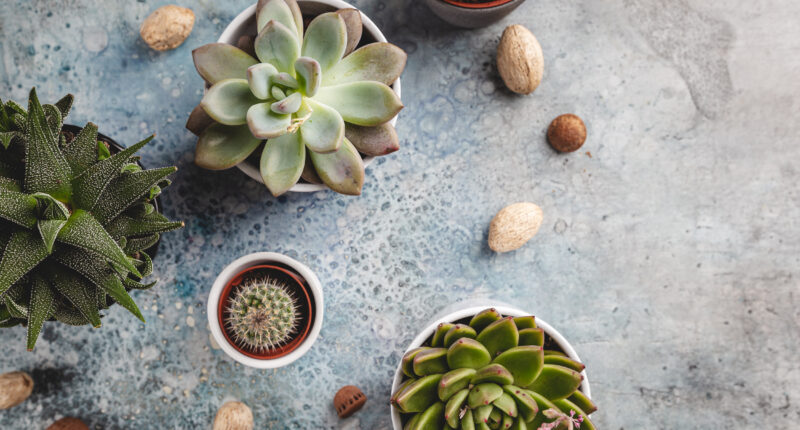Succulents serve various purposes and offer several benefits, making them valuable additions to both indoor and outdoor environments. Here are some of the ways in which succulents are beneficial:
Aesthetics: Succulents are prized for their unique and attractive appearance, with a wide range of shapes, colors, and textures available. They add visual interest and beauty to gardens, landscapes, indoor spaces, and decorative arrangements.
Low Maintenance: Succulents are generally easy to care for and require minimal maintenance compared to other types of plants. They are drought-tolerant and can survive with infrequent watering, making them ideal for busy individuals or those with limited gardening experience.
Air Purification: Like other plants, succulents help improve indoor air quality by absorbing carbon dioxide and releasing oxygen through the process of photosynthesis. While their air-purifying abilities may be modest compared to some other plants, they still contribute to creating a healthier indoor environment.
Stress Reduction: Research has shown that caring for plants, including succulents, can have positive effects on mental health and well-being. Engaging in activities such as gardening or tending to indoor plants can help reduce stress, anxiety, and improve mood.
Indoor Décor: Succulents are versatile plants that can be used to enhance interior décor and add a touch of greenery to indoor spaces. They are well-suited for various container arrangements, terrariums, and decorative displays, making them popular choices for interior decorating.
Water Conservation: Succulents are adapted to arid or semi-arid environments and have evolved mechanisms to store water in their leaves, stems, or roots. Their ability to thrive with minimal water makes them ideal plants for water-wise gardening and xeriscaping projects, which aim to conserve water and reduce irrigation needs.
Educational Purposes: Succulents are excellent educational tools for teaching about plant biology, ecology, and environmental conservation. They provide opportunities for hands-on learning and can be used in school gardens, botanical gardens, and educational programs to engage students and promote environmental awareness.
Habitat Restoration: In some regions, succulents are used in habitat restoration projects to revegetate degraded or disturbed areas and promote soil stabilization. Their ability to adapt to harsh environmental conditions makes them valuable for restoring ecosystems and enhancing biodiversity.
Overall, succulents offer a multitude of benefits, from their aesthetic appeal and low maintenance requirements to their contributions to indoor air quality, stress reduction, and water conservation. Whether used for decorative purposes, environmental restoration, or educational initiatives, succulents play valuable roles in our lives and environments.

Here's what you should do next...
I want to share with you more succulent care tips, growing secrets, and troubleshooting fixes to:
- Grow healthier, more vibrant succulents
- Keep your succulents happy indoors and out
- Revive your unhealthy succulents FAST
- Make your own succulent-specific potting soil
- Inspire tons of different DIY succulent projects
- Solve your most pressing succulent problems
- and TONS of succulent FAQ answers on the next page!
You will also discover over a HUNDRED surprising tips and tricks you can use daily to effortlessly transform your succulents into healthier, happier plants... click the button below to go to the next page to discover more succulent care tips, growing secrets, and troubleshooting fixes that will make your life 100x easier: